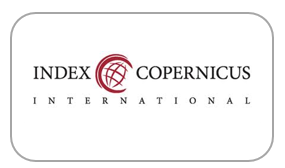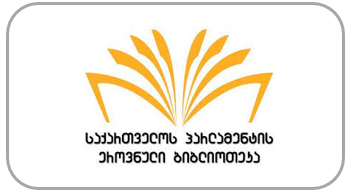ორსულთა რკინადეფიციტური ანემია საქართველოში; მკურნალობისა და პრევენციის თანამედროვე მიდგომები
DOI:
https://doi.org/10.52340/healthecosoc.2025.09.01.15საკვანძო სიტყვები:
დედათა ჯანმრთელობა, ნუტრიციული ინტერვენცია, ჯანმრთელობის ცნობიერება, პირველადი ჯანდაცვა, პრევენცია, ორსულობა, რკინადეფიციტური ანემიაანოტაცია
შესავალი: რკინადეფიციტური ანემია (რდა) ორსულთა ჯანმრთელობის მნიშვნელოვანი გლობალური პრობლემაა, განსაკუთრებით განვითარებად ქვეყნებში, მათ შორის საქართველოშიც. სტატისტიკური მონაცემების მიხედვით, საქართველოში ორსულთა 20-39%-ს რკინადეფიციტური ანემია აღენიშნება, რაც არსებითად აღემატება ევროპის ქვეყნებში დაფიქსირებულ მაჩვენებლებს. მიუხედავად იმისა, რომ ქვეყანაში დანერგილია სახელმწიფო პროგრამები, მათ შორის უფასო რკინის პრეპარატებით მომარაგება და შესაბამისი კლინიკური პროტოკოლები, რდა-ს გავრცელების მაჩვენებელი კვლავ მაღალია. აღნიშნული გამოწვევა მნიშვნელოვანწილად განპირობებულია ორსულთა ინფორმირებულობის დაბალი დონით, საინფორმაციო მხარდაჭერის ნაკლებობითა და პირველადი ჯანდაცვის სისტემის არასაკმარისი ჩართულობით. ჩვენი კვლევის მიზანია საქართველოში რკინადეფიციტური ანემიის გავრცელების ფაქტორების, დიაგნოსტიკისა და მკურნალობის თანამედროვე მიდგომების ანალიზი, მეთოდოლოგია: ნაშრომი ეფუძნება მრავალ წყაროზე დაფუძნებულ მიმოხილვით ანალიზს, მათ შორის საქართველოში და საერთაშორისო დონეზე ჩატარებულ თვისებრივ და რაოდენობრივ კვლევებს. გამოყენებულია ჯანმოს, გაეროს ბავშვთა ფონდისა, საქართველოს დაავადებათა კონტროლის ცენტრის მონაცემები. შედეგები: ორსულთა შორის რკინადეფიციტური ანემიის მაღალი პრევალენტობა განპირობებულია კომპლექსური ფაქტორებით, მათ შორის აღსანიშნავია დაბალი სოციალურ-ეკონომიკური სტატუსი, ორსულობებს შორის მოკლე ინტერვალი, მრავალნაყოფიანი ორსულობა, განათლების დაბალი დონე და რკინის პრეპარატების მიღებისადმი სკეპტიკური დამოკიდებულება. ხაზგასასმელია ფერიტინის დონის რუტინულად არ განსაზღვრა, რაც ართულებს ანემიის ადრეულ დიაგნოსტიკას. განხილვა: მიუხედავად არსებული სახელმწიფო პროგრამებისა, რკინადეფიციტური ანემია საქართველოში კვლავ რჩება ჯანდაცვის სისტემის ერთ-ერთ მნიშვნელოვან გამოწვევად, რაც მიუთითებს არსებული სტრატეგიების ეფექტურობის გადახედვის საჭიროებაზე. არსებული მტკიცებულებები აჩვენებს, რომ აუცილებელია კლინიკურ პრაქტიკაში რკინის დეფიციტის ადრეული დიაგნოსტიკის ხელშეწყობა, საინფორმაციო კამპანიების გაძლიერება, კონსულტაციის პროცესის სტანდარტიზაცია და ოჯახის ექიმების სისტემატური ჩართვა. განსაკუთრებული მნიშვნელობა ენიჭება ეროვნულ საკვებ-ნუტრიციულ პოლიტიკას და მშობიარობის შემდგომი პრევენციული მიდგომების დანერგვას. დასკვნა: რკინადეფიციტური ანემიის პრევენციისა და მართვის გაუმჯობესება საქართველოში საჭიროებს კომპლექსურ, მტკიცებულებაზე დაფუძნებულ და პაციენტზე მორგებულ მიდგომას. ამისათვის აუცილებელია როგორც სამედიცინო, ასევე საგანმანათლებლო და სოციალური სტრატეგიების განვითარება, რაც ხელს შეუწყობს დედათა და ახალშობილთა ჯანმრთელობის გრძელვადიან გაუმჯობესებას.
წყაროები
პაპიაშვილი თ., ვერულავა თ. (2024). სტუდენტთა დამოკიდებულება ჯანსაღი კვების მიმართ და მათი კვებითი ქცევის განმსაზღვრელი ფაქტორები. ჯანდაცვის პოლიტიკა, ეკონომიკა და სოციოლოგია, 8(1). https://doi.org/10.52340/healthecosoc.2024.08.01.01.
მამნიაშვილი გ. (2024). ბავშვთა კვების პროდუქტების შერჩევა: ნდობა, ღირებულების აღქმა და ყიდვის ქცევა. ჯანდაცვის პოლიტიკა, ეკონომიკა და სოციოლოგია, 8(2). https://doi.org/10.52340/healthecosoc.2024.08.02.15
კაპანაძე ნ., ჩილინგარაშვილი ს., თათოშვილი ბ., & ფანჩულიძე თ. (2018). რეგიონებიდან თბილისში სასწავლებლად მიგრირებული სტუდენტების სოციალიზაცია და ჯანმრთელობა . ჯანდაცვის პოლიტიკა, ეკონომიკა და სოციოლოგია, 2. Retrieved from https://heconomic.cu.edu.ge/index.php/healthecosoc/article/view/6802
Ghosh, K., Shet, A. S., & Rathi, M. (2020). Iron deficiency and anaemia in pregnancy: Current perspectives. Indian Journal of Hematology and Blood Transfusion, 36(1), 1–8.
Kassebaum, N. J., et al. (2014). A systematic analysis of global anemia burden. The Lancet Haematology, 1(1), e16–e25.
Means, R. T., & Brodsky, R. A. (2020). Iron deficiency and iron deficiency anemia. In R. A. Brodsky (Ed.), Hematology: Basic Principles and Practice (7th ed.). Elsevier.
Petry, N., Olofin, I., Hurrell, R. F., Boy, E., Wirth, J. P., Moursi, M., & Rohner, F. (2021). The proportion of anemia associated with iron deficiency in low, medium, and high human development index countries: A systematic analysis of national surveys. Nutrients, 13(10), 3599.
Peña-Rosas, J. P., et al. (2015). Daily oral iron supplementation during pregnancy. Cochrane Database of Systematic Reviews, (7), CD004736.
Skhvitaridze, M., et al. (2025). Anemia during pregnancy and adverse maternal outcomes in Georgia. PLOS One.
Tsiklauri, R. et al. (2019). Nutrition Status Surveillance System in Georgia. Acta Scientific Nutritional Health, 3(10), 03–06.
Tsiklauri, N., Lobjanidze, L., & Dvalishvili, N. (2019). Nutritional deficiencies among pregnant women in Georgia: A cross-sectional survey. Georgian Medical News, (296), 52–58.
Verulava, T., Devnozashvili, R. (2021). Nutrition and academic performance among adolescences. Romanian Journal of Diabetes, Nutrition and Metabolic Diseases, 28(3):275–283.
Verulava, T., & Gogua, I. (2025). The knowledge, attitude and practices of pregnant women in preventing iron deficiency anemia in Georgia. One Health & Risk Management. 6(2), 18–32.
Verulava, T., & Gogua, L. (2025). Iron deficiency anaemia among pregnant women in Georgia: Knowledge, attitudes, and system response. Journal of Public Health Policy and Practice, 7(2), 88–97.
UNICEF. (2023). Anaemia in Pregnancy: A Global Review. Retrieved from https://www.unicef.org
WHO. (2024). Guideline: Daily iron supplementation in pregnant women. Geneva: World Health Organization.














